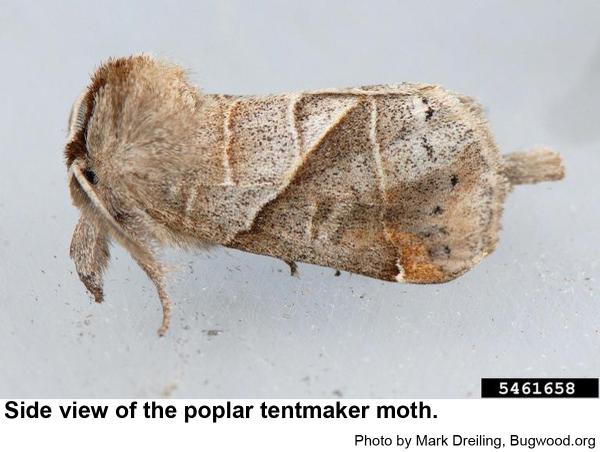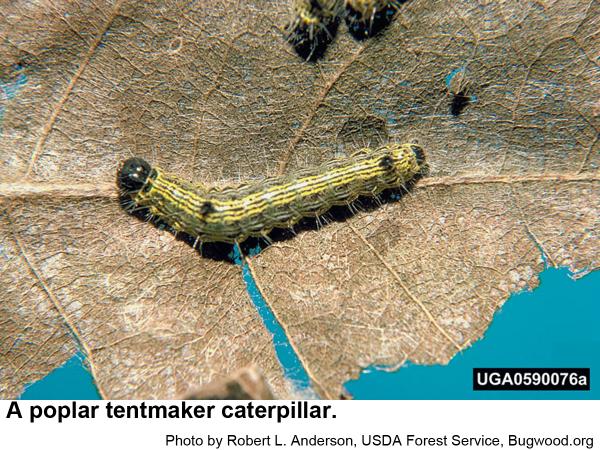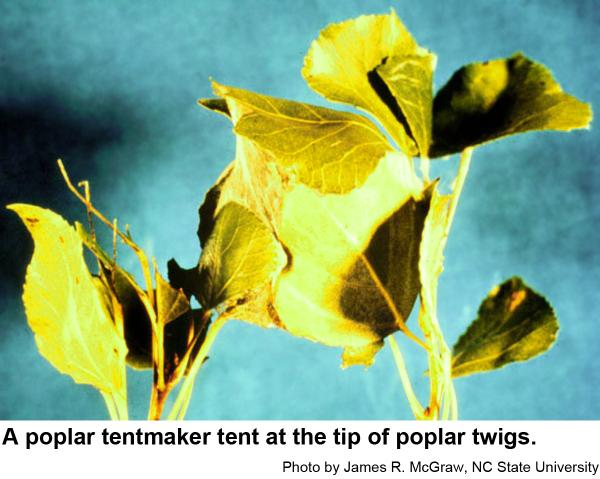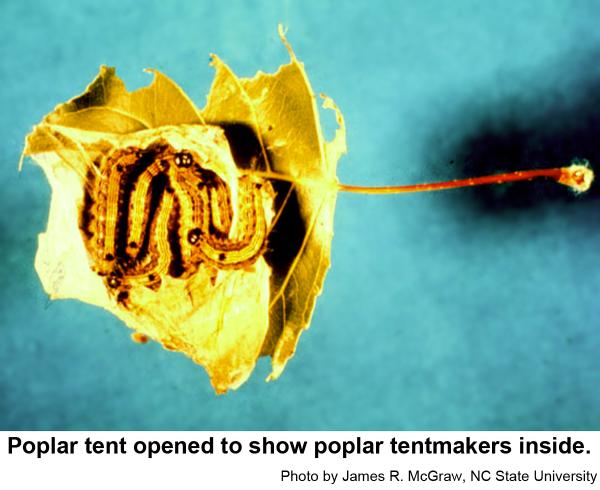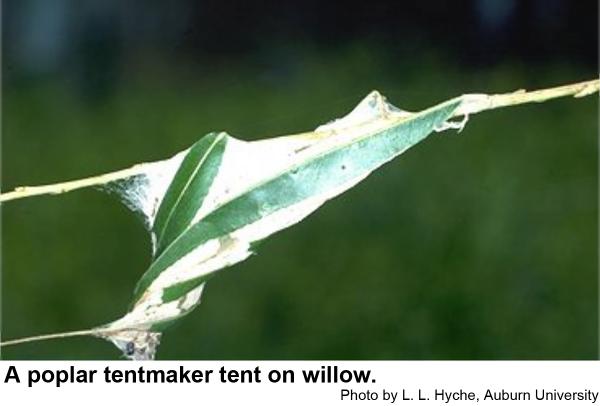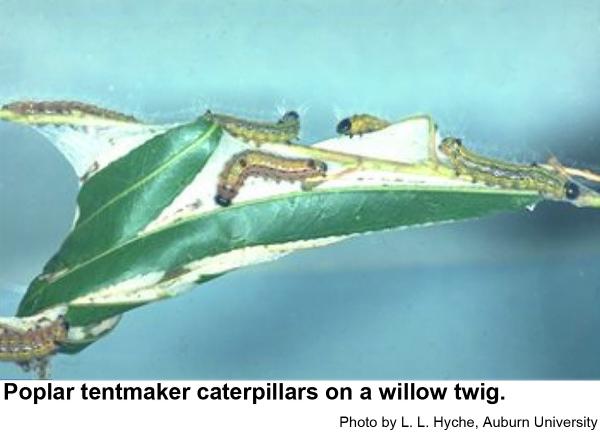Description and Biology
Poplar tentmaker moths, Clostera inclusa, emerge from cocoons in leaf litter in late spring to mate and lay eggs in batches of a hundred or more on the undersides of poplar and willow leaves. The eggs are tiny, spherical, and laid close together. The brownish gray moths are about 1/2 inch long, and they have broken white lines and various blotches on each wing. From the eggs hatch tiny caterpillars that eventually grow into somewhat hairy caterpillars with four, narrow, yellow stripes down the back and up to 13/4 inch long. Just behind the head are two black dots. A larger single black dot occurs about a third of the way back from the black, shiny head. A prominent black dot is close to the tail end. We have at least two generations a year here in North Carolina with enough overlap in the generations that it is possible to find caterpillars from May to October.
Host Plants
Poplar tentmaker caterpillars are sometimes a real nuisance on poplar although they feed on willow as well. Poplar tentmakers sometimes completely defoliate groups of trees by mid summer. This pest is most abundant on trees growing in the open or at the edge of woods rather than trees in deep woods. Consequently, it tends to be an urban pest.
Residential Recomendations
The poplar tentmaker is not reported to be resistant to pesticides, but it may be somewhat difficult to control because the larvae are concealed within the "tents." Sevin, neem extract, or Bacillus thuringiensis should give adequate control of poplar tentmakers, especially when the caterpillars are young. Other pesticides labeled for landscape use should work as well. Bear in mind that later in the growing season, defoliation by this and other pests of willow and poplar will cause little harm to the long term health of these trees. Frost is going to kill any remaining leaves in a few weeks anyhow. In late summer and fall, it would be better to wait until the following year earlier in the growing season to see if poplar tentmakers return before applying an insecticide (and then only if there are a bunch of caterpillars).
Other Resources
- Poplar Tentmaker, Clostera inclusa (Hübner) (Notodontidae). Hyche, L. L. 2002. Auburn University.
- Poplar Tentmaker In IPM (Integrated Pest Management) of Midwest Landscapes. Krischik, V. and J. Davidson. 2013 (last modified). University of Minnesota.
- Extension Plant Pathology Publications and Factsheets
- Horticultural Science Publications
- North Carolina Agricultural Chemicals Manual
For assistance with a specific problem, contact your local N.C. Cooperative Extension Center.
This Factsheet has not been peer reviewed.
Publication date: Jan. 17, 2019
Reviewed/Revised: Oct. 10, 2019
Recommendations for the use of agricultural chemicals are included in this publication as a convenience to the reader. The use of brand names and any mention or listing of commercial products or services in this publication does not imply endorsement by NC State University or N.C. A&T State University nor discrimination against similar products or services not mentioned. Individuals who use agricultural chemicals are responsible for ensuring that the intended use complies with current regulations and conforms to the product label. Be sure to obtain current information about usage regulations and examine a current product label before applying any chemical. For assistance, contact your local N.C. Cooperative Extension county center.
N.C. Cooperative Extension prohibits discrimination and harassment regardless of age, color, disability, family and marital status, gender identity, national origin, political beliefs, race, religion, sex (including pregnancy), sexual orientation and veteran status.


